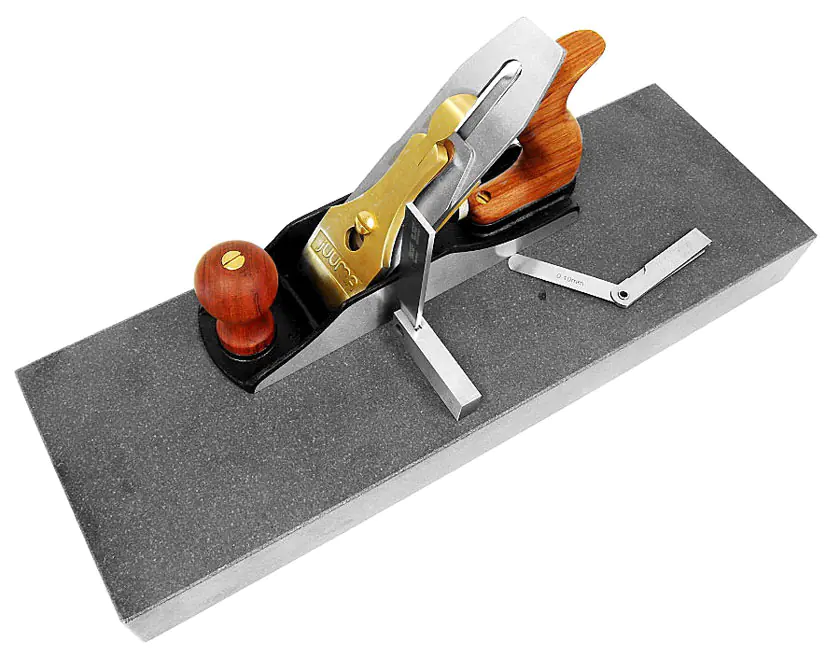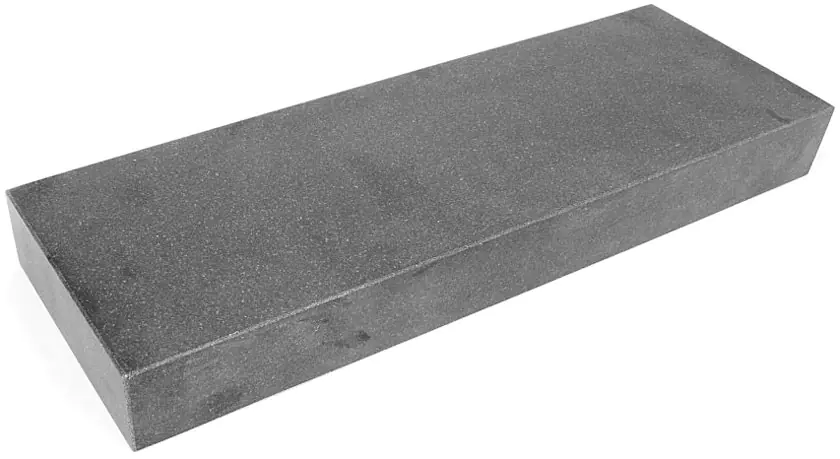February 7, 2025
Instructions - how to use our Tools
Application example - granite measuring plate
Measurement of the flatness of a plane sole and the right angle between the plane sole and side cheeks
For the measurement of the flatness of the plane sole, a hairline ruler is often placed on the sole. We do not consider this method ideal, as it focuses on deviations of just a few thousandths of a millimeter, which are not practical at all. Instead, place the plane on the granite plate and measure at various points with the feeler gauge. The thinnest feeler on your gauge that cannot be pushed underneath anymore is considered the measurement result. For high-priced metal planes, this is usually 0.08 mm, and for mid-priced ones, 0.15 mm.
For the measurement of the squareness between the plane sole and side cheeks, the sole itself should not be used as a reference, as there are also small differences at individual measurement points within the sole. The best tool for this task is an accurate measuring plate made of granite, as it provides a neutral reference. With a precision angle pushed against the side of the plane, deviations can be easily recognized. The arm of the angle must rest firmly on the granite plate. You can measure the deviation at the upper edge of the side with a feeler gauge. The thinnest feeler on your gauge that cannot be pushed in between anymore is considered the measurement result. For high-priced metal planes, this is usually 0.06 mm, and for mid-priced ones, 0.15 mm.
Each manufacturer specifies, if at all, different tolerance values that may deviate from those given here, so in case of doubt, please inquire directly with them.
Important: Ensure that the granite plate and the measuring object are clean and free of dust.
For the measurement of the flatness of the plane sole, a hairline ruler is often placed on the sole. We do not consider this method ideal, as it focuses on deviations of just a few thousandths of a millimeter, which are not practical at all. Instead, place the plane on the granite plate and measure at various points with the feeler gauge. The thinnest feeler on your gauge that cannot be pushed underneath anymore is considered the measurement result. For high-priced metal planes, this is usually 0.08 mm, and for mid-priced ones, 0.15 mm.
For the measurement of the squareness between the plane sole and side cheeks, the sole itself should not be used as a reference, as there are also small differences at individual measurement points within the sole. The best tool for this task is an accurate measuring plate made of granite, as it provides a neutral reference. With a precision angle pushed against the side of the plane, deviations can be easily recognized. The arm of the angle must rest firmly on the granite plate. You can measure the deviation at the upper edge of the side with a feeler gauge. The thinnest feeler on your gauge that cannot be pushed in between anymore is considered the measurement result. For high-priced metal planes, this is usually 0.06 mm, and for mid-priced ones, 0.15 mm.
Each manufacturer specifies, if at all, different tolerance values that may deviate from those given here, so in case of doubt, please inquire directly with them.
Important: Ensure that the granite plate and the measuring object are clean and free of dust.


